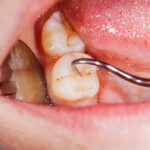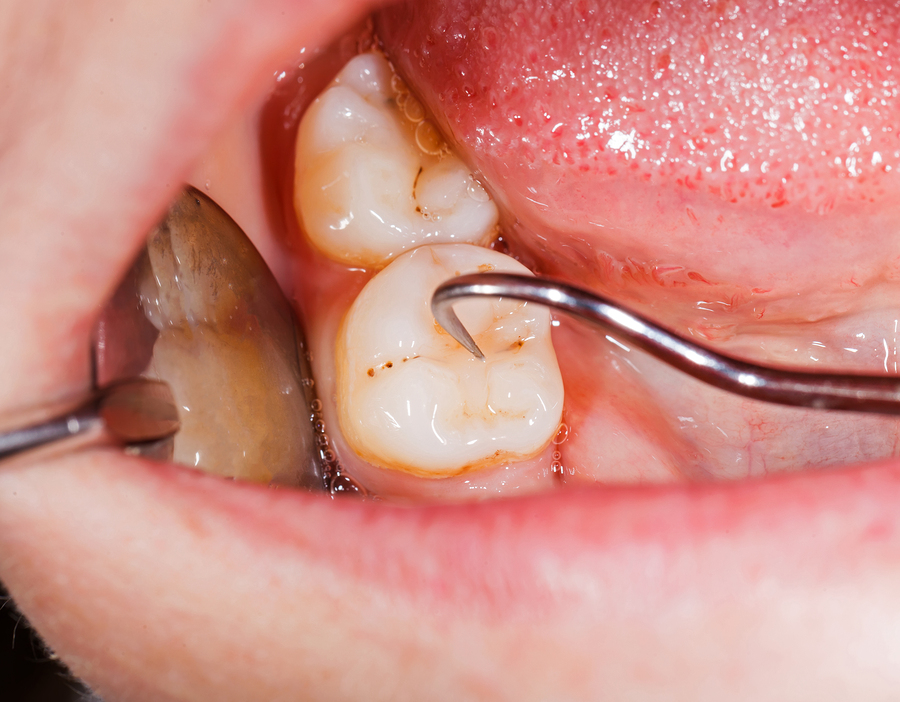 Periodontitis, or gum disease, is usually caused by the build up of plaque on the teeth around the gum line. It is sometimes a form of gingivitis that has been advanced, showing gums that are severely inflamed.
Periodontitis, or gum disease, is usually caused by the build up of plaque on the teeth around the gum line. It is sometimes a form of gingivitis that has been advanced, showing gums that are severely inflamed.
Aside from the plaque build up, periodontal disease is usually caused by improper brushing and flossing, smoking, genetic disposition and a number of other factors. If you have someone else in your family who has dealt with gingivitis, the chances are also good that you will be more susceptible to getting it.
This disease is one caused by bacteria where it impacts the gums, the deep connective tissues, and also the jaw bone.
Symptoms of gum disease include:
- Sensitive, red gums that involve swelling.
- Chronic halitosis.
- Deep pockets that will form in between the gums and teeth, sometimes filled with pus.
- Receding gums.
- Gums that bleed during and after brushing and flossing.
- Teeth that are loose or shifting.
- Changes in the fit of the teeth during bite.
The American Dental Association states that the treatment is aimed to prevent further advancement of the disease, and it is a lifelong plan for treatment. In some cases, it could be non-surgical or surgical.
Non-Surgical Treatment
Scaling – This is a process where the plaque is scarped off of the surface of the teeth. Using an instrument called a scaler, or an electronic device like a sonic or ultrasonic scaler. The electronic device will usually be preferred as it is faster, making the process a lot more comfortable for the patient.
Root Planing – This process involves scaling the root of each tooth, rather than the surface area, to discourage the build up of tartar.
Antibiotics – These are drugs that kill the bacteria in plaque. They come in the form of a gel or mouth rinse that is applied to periodontal pockets to help promote tissue healing, as well as oral tablets that you can take to control bacterial infection.
These two processes are known as deep cleaning, used whenever a patient is dealing with a mild or average problem with gum disease. There will generally be no further treatment necessary when the process is completed and the patient will only have to work on maintaining great oral hygiene practices once either scaling or root plaining is complete, just to be sure that it does not come back.
Surgical Treatment
Surgery may be needed whenever non-surgical options do not work to heal the periodontal pockets that are created by the bacteria in place, or if there is a severe case of periodontitis.
This is an invasive surgical procedure where the surgeon reaches below the gum line to the tooth root where there is plaque and tarter build up and the bacteria has worked to destroy both tissue and bone that works to hold the gum in place. The tartar here, also known as calculus that is a build up of plaque, that is actually harder than bone.
Gingival flap surgery and bone and tissue grafts are the more common form of surgery.
Bone grafts are done to reshape or rebuild the bones, while the tissue grafts are made to fill in the spaces where gum has receded, then cover the roots or make gum tissue. There are tissue stimulating proteins that are also administered as a way to encourage the body to regenerate any lost bone or tissue.
Flap surgery will help to reduce the depth of any formed pockets, therefore reducing the area where bacteria is present. This procedure involves the folding back of gums to get to the root of the tooth. Tartar is then cleaned and the pockets are filled, and gums are stitched into place once again.
So, if you’re in need of periodontal treatment, give us a call today to schedule an examination and treatment plan to get your gums healthy again.



